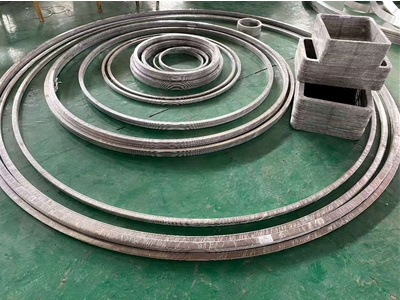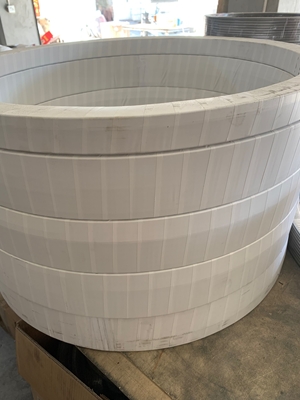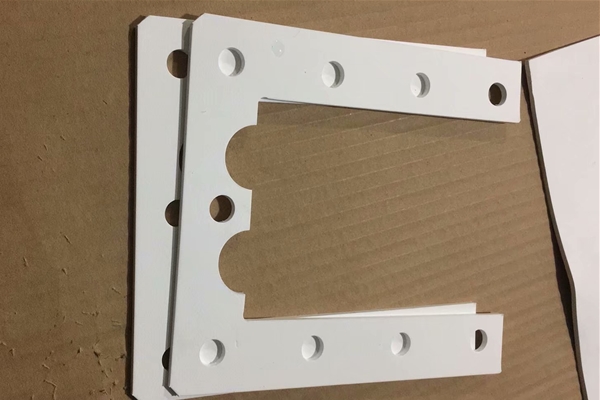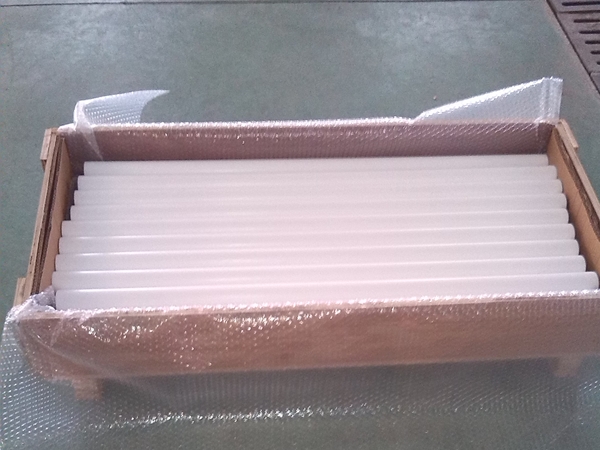Metal Jacketed gaskets (MJGs) and spiral wound gaskets (SWGs) are effective sealing gaskets for high-temperature, high-pressure, and chemical applications. While both are semi-metallic gaskets, they seal differently, install differently, and are used in different applications. This article gives you a clear comparison—to help you specify them.
Comparison:
| Issue | Metal Jacketed Gasket (MJG) | Spiral Wound Gasket (SWG) |
|---|---|---|
| Seal behavior | Primarily static sealing; relies on compressed soft filler encased in a metal jacket | Same static sealing; V-shaped metal strip and filler provide elasticity & recovery |
| Flange condition | Prefers smooth, flat, well-aligned faces and higher bolt load | Tolerates moderate flange distortion, bolt relaxation, pressure/temperature cycling |
| Shapes & sizes | Excellent for custom shapes (oval, square with ribs, complex profiles) and large diameters | Mostly spiral wound per ASME/EN; custom OD/ID and rings are widely available |
| Resilience | Limited recovery; good long-term stability in steady-state service | High resilience & rebound; excels under variable loads |
| Typical use | Heat exchangers, reactors, vessel manways, large-OD flanges | Pipe flanges, valves, pumps, and pressure vessels with cycling |
| Economics | Higher unit cost; durable under frequent disassembly; low flange face wear | Lower unit cost; may need more frequent replacement in severe cycling |
| Install sensitivity | Sensitive to surface finish and seating stress; needs uniform tightening | Generally forgiving; still requires correct stress and ring selection |
What Is a Metal Jacketed Gasket?
Construction: An MJG combines a soft, compressible filler (graphite, PTFE, ceramic fiber, etc.) with an outer metal shell (typically 304/316L stainless, carbon steel, brass, aluminum, soft iron, Monel, or titanium). The jacket thickness is usually 0.2–0.5 mm, formed by cold working processes. Cross-sections are available as flat (plain) or corrugated jackets, and profiles can be single- or double-jacketed.
Working principle: Under bolt load, the metal jacket spreads the stress while the filler conforms to micro irregularities, creating a tight seal. Because the filler is encapsulated, it does not smear or contaminate the flange and is non-adherent, helping protect the sealing face.
Performance characteristics:
High temperature & corrosion capability depend on jacket and filler selection (e.g., 316L + graphite for high-temp hydrocarbons; Monel + PTFE for halides).
Lower required seating stress than all-metal gaskets, but higher than soft gaskets; prefers smooth, flat flanges.
Long service life in steady-state conditions; resistant to flange face corrosion and sticking.
Customizability: readily manufactured into elliptical, rectangular, rib-reinforced, and other non-standard shapes for heat exchangers and special equipment.
Limitations: limited recovery vs. SWG; sealing reliability depends on uniform bolt load and flange flatness.
Manufacturing note: For many sizes, we offer a radial-wound filler (graphite or PTFE tape wound into a ring). This reduces material waste, allows precise OD/ID control by simply adjusting turns, and meets stringent leakage targets when assembled within specified seating stresses.
Where Metal Jacketed Gaskets are used.
Heat exchangers, reactors, manways, and large-diameter vessel connections
Services requiring custom shapes or segmental construction
Steady-state high-temperature/high-pressure duties in oil & gas, petrochem, and power

What Is a Spiral Wound Gasket?
Basic winding only (for male-female or tongue-and-groove flanges)
Outer centering ring (Style CG) for raised-face flanges
Inner ring + outer ring (Style CGI) to prevent inward buckling and improve blowout resistance
Common winding metals: 304, 316/316L, 321, Inconel; rings typically carbon steel or stainless.
Working principle: The metal winding provides elastic recovery while the filler seals the leak paths. This makes SWGs highly tolerant of thermal and pressure cycling and bolt relaxation.
Performance characteristics:
Excellent resilience and recovery → strong dynamic sealing for fluctuating service
Broad temperature/pressure envelope governed by winding/filler metallurgy
Easier installation and generally more forgiving of minor flange imperfections
Limitations: susceptible to over compression if seating stress is uncontrolled; circular geometry is standard (customs available but not as flexible as MJG for complex shapes)
Where SWGs are used:
Piping flanges, valves, pumps, and vessels with frequent start-stop or load cycling
High-temperature, high-pressure services across refining, chemical, power, marine, and metallurgy
Key Differences of The Metal Jacketed Gasket and the Spiral Wound Gasket
MJG: composite jacket + filler; best for static sealing where conditions are stable and flanges are well prepared.
SWG: metal/filler spiral with inherent spring action; widely used for most sealing applications.
MJG: prefers smooth, flat faces and uniform higher seating stress; torque accuracy is crucial.
SWG: more tolerant of minor misalignment and bolt relaxation; inner ring (CGI) helps control compression.
Both handle high temperature and pressure with the right metallurgy and filler.
Material pairing drives capability: e.g., graphite for high temp; PTFE for strong chemical resistance; Monel/Hastelloy for chlorides/acids.
4) Shapes & Customization
MJG: unbeatable for non-circular and complex patterns (e.g., segmental heat-exchanger gaskets with ribs/partitions).
SWG: optimized for standard circular flanges per ASME B16.20 / EN dimensions; customs available within limits.
5) Installation & Maintenance
MJG: quick to place once fabricated; verify flange flatness and finish; use cross-pattern tightening to achieve uniform seating stress.
SWG: generally easier for crews; choose CG or CGI based on flange type and service severity; avoid over-compression.
6) Economics:
MJG: higher unit cost but long-lived in steady service; protects flange faces; fewer re-machining events.
SWG: lower unit cost and widely available; in severe cycling, may require more frequent replacement—budget accordingly.
Selection Guide:
Process Conditions:
Max/min temperature & pressure, cycling frequency, startup/shutdown profile
Media compatibility (hydrocarbons, steam, acids/halides, oxygen service)
Flange Details
Facing: RF, RTJ, TG, MF; surface finish (Ra), flatness, alignment
Bolt material/size and achievable assembly stress (gasket seating stress target)
Geometry & Footprint
Circular standard vs. custom/complex shapes and large diameters (heat exchangers)
Emissions & Compliance Goals
Fugitive emissions targets; ring selection (e.g., CGI for higher integrity)
Consider testing/cert frameworks where applicable
Maintainability & Cost
Turnaround intervals, crew skill, and desire to minimize flange resurfacing
Choose Metal Jacketed Gasket when you need custom geometry, steady-state high-temp/high-pressure sealing, and clean flange faces post-service.
Choose Spiral Wound Gasket when you expect thermal/pressure cycling, variable bolt loads, and need a forgiving, resilient gasket for standard flanges.
MJG Jackets: 304, 316/316L, 321, carbon steel, brass, aluminum, soft iron, Monel, titanium
MJG Fillers: flexible graphite, PTFE, mica, and ceramic
SWG Windings: 304, 316/316L, 321, Inconel; Filler: graphite, PTFE, mica; Rings: CS, 304/316
Thickness / Density: We size filler density (MJG) and winding density/compression stop (SWG) to your required seating stress and leakage class.
Note: Temperature/pressure limits are system dependent. Always pair metallurgy and filler with the actual media, corrosion potential, and code requirements.
Applications We Support
Oil & Gas / Petrochemical: exchangers, towers, reactors, high-pressure piping
Chemical Processing: aggressive media, halides, acids; emissions-sensitive services
Power Generation: steam circuits, HRSGs, turbine auxiliaries
Metals & Mining / Pulp & Paper / Marine: high-load rotating equipment and piping
Why Work With Us
Application-driven engineering: We size gasket density, winding/ring configuration, and jacket/filler metallurgy to your exact seating stress window and flange condition.
Custom builds at scale: From large OD, ribbed jacketed exchanger gaskets to CGI spiral wounds for emissions-critical flanges.
Fast turnarounds: Standard sizes in stock; expedited builds for outages.





